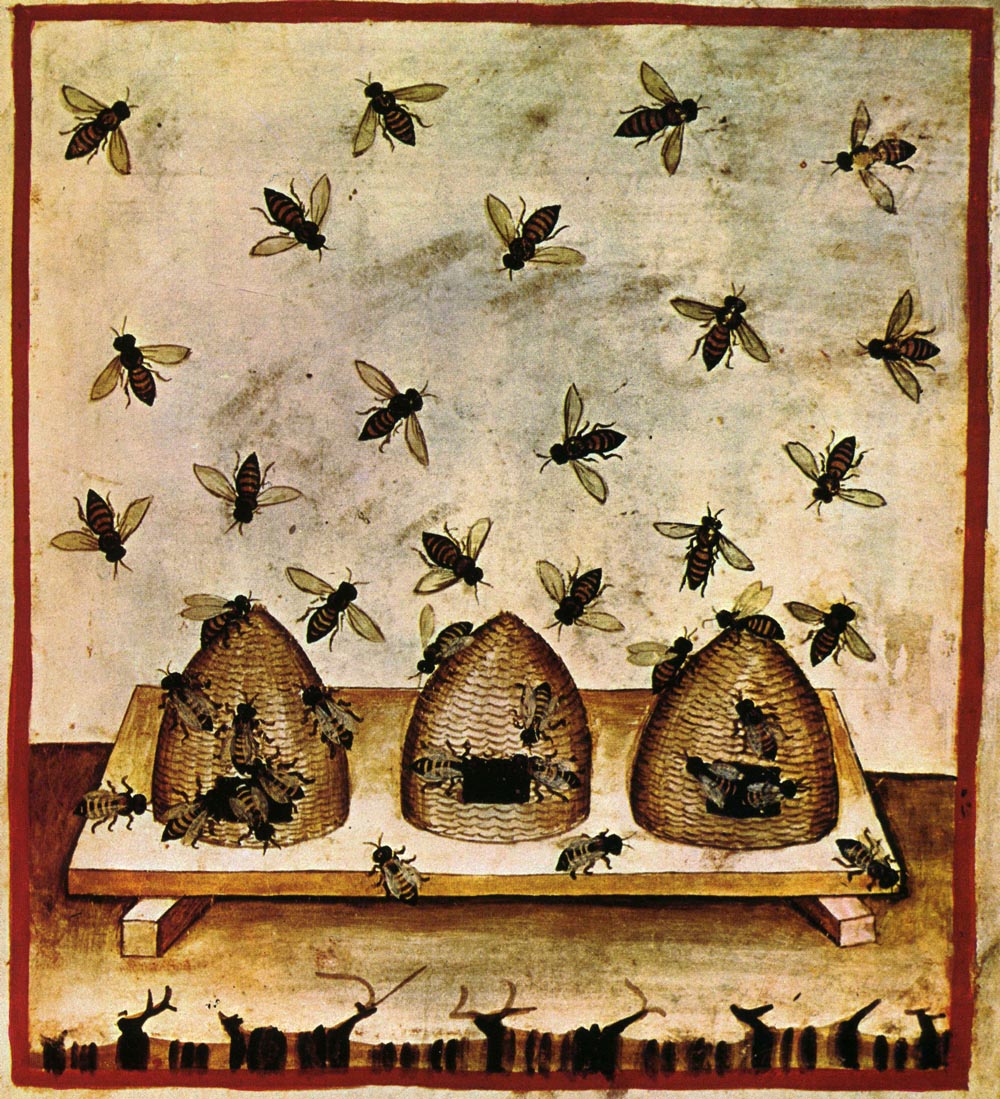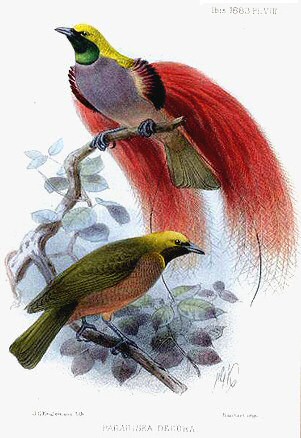|
Canestrini
Giovanni Canestrini (26 December 1835 – 14 February 1900) was an Italian naturalist and biologist and translator who was a native of Revò. Career He initially studied in Gorizia and Meran, then furthered his education in natural sciences at the University of Vienna. From 1862 to 1869, he was a lecturer at the University of Modena, and in 1869 became a professor of zoology and comparative anatomy at the University of Padua. In 1862 he founded the ''Società dei Naturalisti Modenesi'' (Modena Society of Naturalists), and in 1871, the ''Società Veneto-Trentina di Scienze Naturali'' (Trento-Venetian Society of Natural Sciences). He is credited with establishment of the bacteriology laboratory at Padua. Canestrini made contributions in several biological disciplines, performing important research in the field of acarology. He was an advocate of Darwinism, and was responsible for translating Darwin's works. In 1864, he was the first to translate Darwin's ''On the Origin of Specie ... [...More Info...] [...Related Items...] OR: [Wikipedia] [Google] [Baidu] |
Acarology
Acarology (from Ancient Greek /, , a type of mite; and , ) is the study of mites and ticks, the animals in the order Acarina. It is a subfield of arachnology, a subdiscipline of the field of zoology. A zoologist specializing in acarology is called an acarologist. Acarologists may also be parasitologists because many members of Acarina are parasitic. Many acarologists are studying around the world both professionally and as amateurs. The discipline is a developing science and long-awaited research has been provided for it in more recent history. Acarological organisations * Laboratory of Medical Acarology, Academy of Sciences of the Czech Republic Tick Research Laboratory University of Rhode Island Tick Research Labat Texas A&M University Acarological societies International * International Congress of Acarology * Societe Internationale des Acarologues de Langue Francaise * Systematic and Applied Acarology Society Regional * Acarology Society of America * Acarological Soc ... [...More Info...] [...Related Items...] OR: [Wikipedia] [Google] [Baidu] |
Acari
Mites are small arachnids (eight-legged arthropods). Mites span two large orders of arachnids, the Acariformes and the Parasitiformes, which were historically grouped together in the subclass Acari, but genetic analysis does not show clear evidence of a close relationship. Most mites are tiny, less than in length, and have a simple, unsegmented body plan. The small size of most species makes them easily overlooked; some species live in water, many live in soil as decomposers, others live on plants, sometimes creating galls, while others again are predators or parasites. This last type includes the commercially destructive '' Varroa'' parasite of honey bees, as well as scabies mites of humans. Most species are harmless to humans, but a few are associated with allergies or may transmit diseases. The scientific discipline devoted to the study of mites is called acarology. Evolution and taxonomy The mites are not a defined taxon, but is used for two distinct groups of ... [...More Info...] [...Related Items...] OR: [Wikipedia] [Google] [Baidu] |
Anthropology
Anthropology is the scientific study of humanity, concerned with human behavior, human biology, cultures, societies, and linguistics, in both the present and past, including past human species. Social anthropology studies patterns of behavior, while cultural anthropology studies cultural meaning, including norms and values. A portmanteau term sociocultural anthropology is commonly used today. Linguistic anthropology studies how language influences social life. Biological or physical anthropology studies the biological development of humans. Archaeological anthropology, often termed as 'anthropology of the past', studies human activity through investigation of physical evidence. It is considered a branch of anthropology in North America and Asia, while in Europe archaeology is viewed as a discipline in its own right or grouped under other related disciplines, such as history and palaeontology. Etymology The abstract noun '' anthropology'' is first attested in referen ... [...More Info...] [...Related Items...] OR: [Wikipedia] [Google] [Baidu] |
Apiculture
Beekeeping (or apiculture) is the maintenance of bee colonies, commonly in man-made beehives. Honey bees in the genus ''Apis'' are the most-commonly-kept species but other honey-producing bees such as ''Melipona'' stingless bees are also kept. Beekeepers (or apiarists) keep bees to collect honey and other products of the hive: beeswax, propolis, bee pollen, and royal jelly. Pollination of crops, raising queens, and production of package bees for sale are other sources of beekeeping income. Bee hives are kept in an apiary or "bee yard". The keeping of bees by humans, primarily for honey production, began around 10,000 years ago. Georgia is known as the "cradle of beekeeping" and the oldest honey ever found comes from that country. The 5,500-year-old honey was unearthed from the grave of a noblewoman during archaeological excavations in 2003 near the town Borjomi. Ceramic jars found in the grave contained several types of honey, including linden and flower honey. Domestication of ... [...More Info...] [...Related Items...] OR: [Wikipedia] [Google] [Baidu] |
Anthropology
Anthropology is the scientific study of humanity, concerned with human behavior, human biology, cultures, societies, and linguistics, in both the present and past, including past human species. Social anthropology studies patterns of behavior, while cultural anthropology studies cultural meaning, including norms and values. A portmanteau term sociocultural anthropology is commonly used today. Linguistic anthropology studies how language influences social life. Biological or physical anthropology studies the biological development of humans. Archaeological anthropology, often termed as 'anthropology of the past', studies human activity through investigation of physical evidence. It is considered a branch of anthropology in North America and Asia, while in Europe archaeology is viewed as a discipline in its own right or grouped under other related disciplines, such as history and palaeontology. Etymology The abstract noun '' anthropology'' is first attested in referen ... [...More Info...] [...Related Items...] OR: [Wikipedia] [Google] [Baidu] |
Arachnid
Arachnida () is a class of joint-legged invertebrate animals ( arthropods), in the subphylum Chelicerata. Arachnida includes, among others, spiders, scorpions, ticks, mites, pseudoscorpions, harvestmen, camel spiders, whip spiders and vinegaroons. Almost all adult arachnids have eight legs, although the front pair of legs in some species has converted to a sensory function, while in other species, different appendages can grow large enough to take on the appearance of extra pairs of legs. The term is derived from the Greek word (''aráchnē'', 'spider'), from the myth of the hubristic human weaver Arachne, who was turned into a spider. Almost all extant arachnids are terrestrial, living mainly on land. However, some inhabit freshwater environments and, with the exception of the pelagic zone, marine environments as well. They comprise over 100,000 named species, of which 47,000 are species of spiders. Morphology Almost all adult arachnids have eight legs, unli ... [...More Info...] [...Related Items...] OR: [Wikipedia] [Google] [Baidu] |
Sexual Selection
Sexual selection is a mode of natural selection in which members of one biological sex choose mates of the other sex to mate with (intersexual selection), and compete with members of the same sex for access to members of the opposite sex (intrasexual selection). These two forms of selection mean that some individuals have greater reproductive success than others within a population, for example because they are more attractive or prefer more attractive partners to produce offspring. Successful males benefit from frequent mating and monopolizing access to one or more fertile females. Females can maximise the return on the energy they invest in reproduction by selecting and mating with the best males. The concept was first articulated by Charles Darwin who wrote of a "second agency" other than natural selection, in which competition between mate candidates could lead to speciation. The theory was given a mathematical basis by Ronald Fisher in the early 20th century. Sexual ... [...More Info...] [...Related Items...] OR: [Wikipedia] [Google] [Baidu] |
Pangenesis
Pangenesis was Charles Darwin's hypothetical mechanism for heredity, in which he proposed that each part of the body continually emitted its own type of small organic particles called gemmules that aggregated in the gonads, contributing heritable information to the gametes. He presented this 'provisional hypothesis' in his 1868 work '' The Variation of Animals and Plants Under Domestication'', intending it to fill what he perceived as a major gap in evolutionary theory at the time. The etymology of the word comes from the Greek words ''pan'' (a prefix meaning "whole", "encompassing") and ''genesis'' ("birth") or ''genos'' ("origin"). Pangenesis mirrored ideas originally formulated by Hippocrates and other pre-Darwinian scientists, but using new concepts such as cell theory, explaining cell development as beginning with gemmules which were specified to be necessary for the occurrence of new growths in an organism, both in initial development and regeneration. It also accounted ... [...More Info...] [...Related Items...] OR: [Wikipedia] [Google] [Baidu] |
The Descent Of Man
''The Descent of Man, and Selection in Relation to Sex'' is a book by English naturalist Charles Darwin, first published in 1871, which applies evolutionary theory to human evolution, and details his theory of sexual selection, a form of biological adaptation distinct from, yet interconnected with, natural selection. The book discusses many related issues, including evolutionary psychology, evolutionary ethics, evolutionary musicology, differences between human races, differences between sexes, the dominant role of women in mate choice, and the relevance of the evolutionary theory to society. Publication As Darwin wrote, he posted chapters to his daughter Henrietta for editing to ensure that damaging inferences could not be drawn, and also took advice from his wife Emma. Many of the figures were drawn by the zoological illustrator T. W. Wood, who had also illustrated Wallace's '' The Malay Archipelago'' (1869). The corrected proofs were sent off on 15 January 1871 t ... [...More Info...] [...Related Items...] OR: [Wikipedia] [Google] [Baidu] |
Giovanni Giuseppe Bianconi
Giovanni Giuseppe Bianconi, sometimes J. Josephi or Joseph Bianconi, (31 July 1809 in Bologna – 18 October 1878 in Bologna) was an Italian zoologist, herpetologist, botanist and geologist. Career Bianconi was a Professor of Natural History at the University of Bologna. In the field of herpetology he described several new species of amphibians and reptiles. In 1874, Bianconi published a book on "independent creations", which utilized zoological arguments against Darwinism.Kölbl-Ebert, Martina. (2009). ''Geology and Religion: A History of Harmony and Hostility''. The Geological Society. p. 270. The first edition was printed in French and contained a letter to Charles Darwin. The book sold well and Bianconi and his son Giovanni Antonio published a revised Italian edition in 1875. Bianconi argued that "enlightened application of laws of mechanics, physics, physiology" led to the conclusion that every part of an organism had been created by the "unlimited intelligence" of God. B ... [...More Info...] [...Related Items...] OR: [Wikipedia] [Google] [Baidu] |


_Lorryia_formosa_2_edit.jpg)


.jpg)


